| Home | | | About | | | PORTFOLIOS | | | Contact |
BLOG/WRITING
Formidable Forms
The final element of art I used to introduce to students of drawing, painting or design was form. Form was my favorite because I like drawing and drawing is fundamentally describing form. Shapes are 2D forms. As usual I would try and show how the elements of art work at a visceral and emotive level, consciously or unconsciously. I wanted to show how powerful, suggestive, and manipulative of perception shapes and forms can be. And I wanted a bit of a Voight-Kampft style presentation to provoke human (not replicant) responses. Here is some of the stuff I used to like to show and talk about.
Having worked in animation as a background painter and art director I had taken notice of the form of characters, both 'good' and 'bad'. There are particular qualities to their design depending on their 'alignment'. For example, I worked on a direct-to-video sequel to Beauty And The Beast. Weird story. Sort of a cartoon manifestation of The Stockholm Syndrome or a bad marriage. The male holding a woman hostage is a beast but she fervently believes 'I'll change him...' Regardless, here's the prince in his more palatable form.
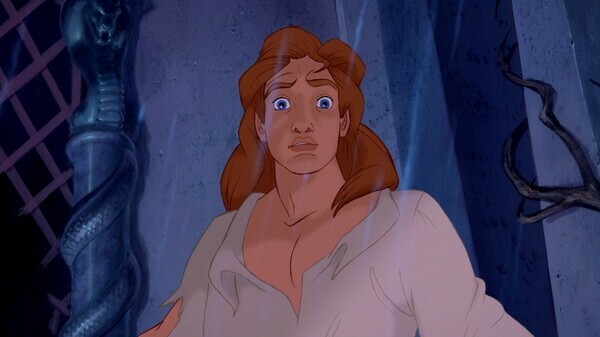
Notice his large eyes and flat face. He's exhibiting traits of a juvenile primate or mammal, despite apparently being a mature adult capable of reproduction. These childhood, or paedomorphic traits, when retained in a mature specimen, are called neoteny. Compared to other primates and apes, humans generally exhibit neotenous traits. Humans might retain these traits for various reasons. Perhaps curious and flexible childhood brains come with the neoteny package. Perhaps because humans have evolved to work together in groups the neotenous traits might make individuals easier to collaborate with. Neoteny is also a condition that domesticated mammals exhibit through breeding. Their behavior is less 'wild'. Perhaps humans are more 'domesticated' compared to other primates. It has been speculated that there has been increasing sexual selection for neoteny, as in 'cuteness', during human mating. Males in general might seek younger 'cuter' females as sexual partners as they might be more fertile, pushing the species as a whole toward neoteny. In B&B Belle herself is without doubt 'cute' and neotenous, and the same might be said for the Prince, above. But compare the prince after he has transmografied into 'The Beast'...
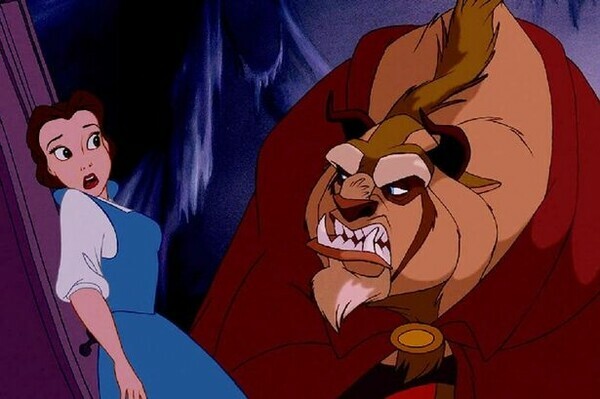
...Proportionally smaller eyes, pronounced chin, receding forehead. Obviously he's less domesticated, more animal-like ('wild"), even ignoring the sharp gnashers and plush fur. He now exhibits traits of form associated with gerontomorphism (also called peromorphism). These traits are the opposite of neoteny. Take a look at the two chimps below; on the left an adult and on the right a 'child'. Notice the difference in form. We respond far more positively to the neotenous juvenile on the right because it is 'cute'. Flat face, big eyes and bulging cranium. Immature mammals aren't just cute, they are curious, engaging and affectionate. We have a strong positive emotional response to their form and instinctively want to pick them up and perhaps even nurture them. This is probably a visceral, emotive and mammalian evolutionary response to perceived infant forms. A warm positive response from a subject to an immature mammalian form would suggest they are not replicants and capable of reacting emotively and humanly to an element of art; form. With onset of adulthood chimps, like the one on the left become gerontomorphic, as well as more aggressive and dangerous. We correspondingly respond more cautiously, even with some alarm, to wild looking gerononmorphic forms.

Below is a human baby, exhibiting 'cute' paedomorphic traits; if these traits existed in adulthood they would be neotenous. Likewise with the 'cute' cat in the photo below the baby. Can you sense that you are responding similarly to the two images?

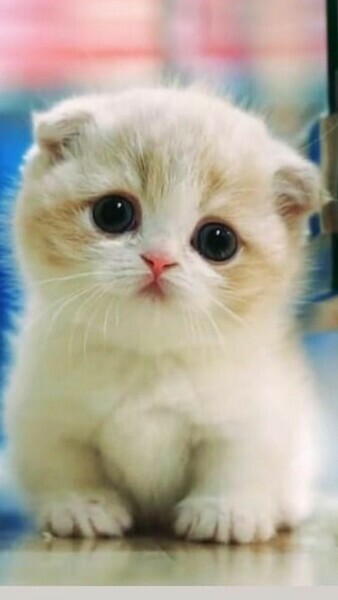
Below are a couple of adult fox photos I found online. The top photo is a wild red fox. The bottom photo is allegedly a domesticated, probably Russian Siberian fox. The Soviets bred domesticated Siberian foxes, that is, they selected them for neotenous traits of being more tame, docile and less 'wild', in order to farm them for their fur. Unfortunately the white coats became mottled with dark spots; in fur bearing mammals this (often) black and white or mottled colouring is indicative of domestication and made the fur less desirable; it didn't match the wild specimens. Domesticated dogs, cows, and horses exhibit similar patching on their fur; Dalmation dogs, in black and white, are a striking example of this. Livestock are of course domesticated in order to become more docile and manageable and also exhibit the mottled fur colouration. Pets are bred to be tame, docile and affectionate, but also to look 'cute', which involves big eyes, flat faces, and floppy ears. This is a casual observation, but it seems that dogs with longer snouts and more gerontomorphic features do seem more aggressive, as in Dobermans. Notice the structure and form of the heads of the wild and domesticated foxes below.
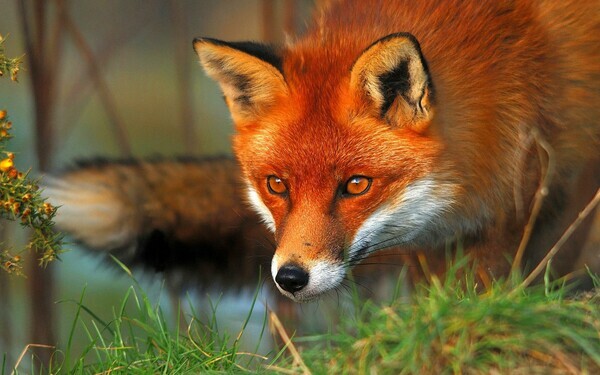
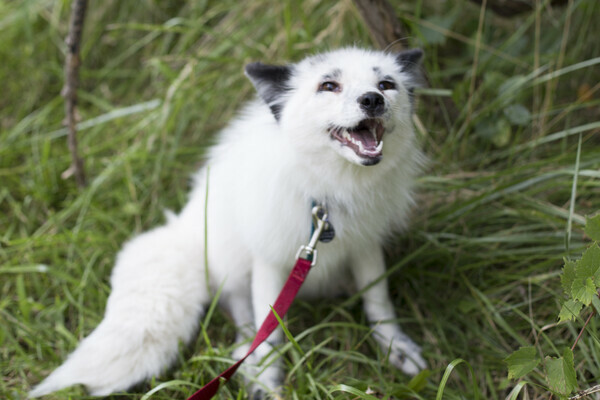
Directly below is a classic gerontomorphic human head. Compare to the adult chimp. The traits associated with the form of wicked witches are exactly the kind of traits that I noticed would be exhibited in 'bad characters' in the animations I worked on, and also in the animated film and television I watched to stimulate my own on-the-job background painting treatments. It is as though if you want to make a character 'bad' you give them these traits. Gerontomorphic traits are often projected on to racial groups, for example Jewish people; depictions of Shylock in The Merchant of Venice are/were often designed to fit this 'bad character' appearance. Arab 'Evil Viziers' in cartoons also demonstrated the same approach to form.
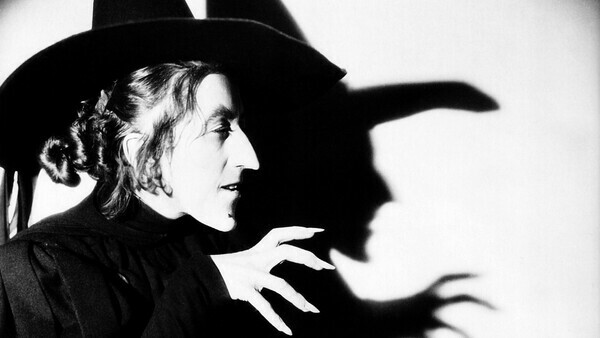


Here's some more animated villains all showing gerontomorphic traits in the form of their heads...
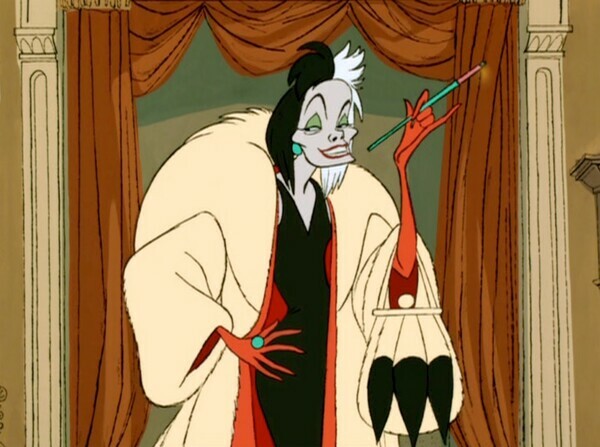
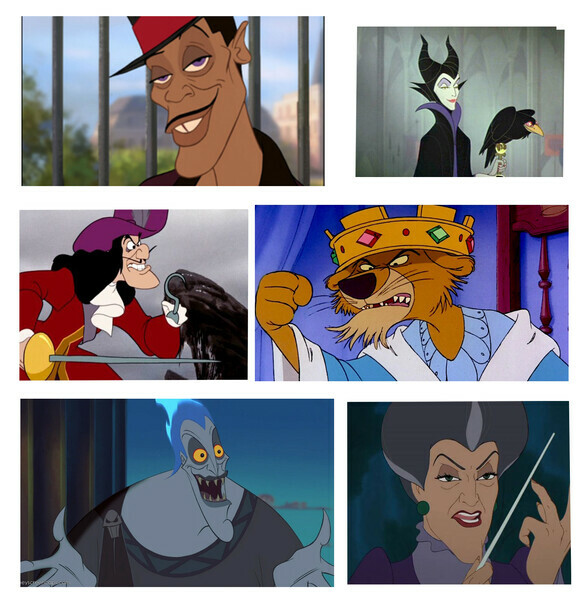
The casting and/or make-up of live action characters often projects the same features onto villains.
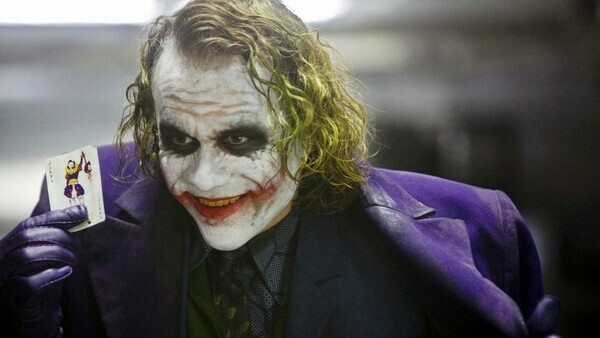

There is a real downside to all of this. We can't help the way we look, we're born into our features. Or age into them. Someone with the misfortune of having more gerontomorphic features probably won't be treated as well as people with 'cute' features. Think about how cute and attractive school children might be treated by teachers with more consideration and affection than 'unattractive' children, and how they may well go on to do better in life as a result.
One last note on the effect of villainous characters whose form signifies bad alignment; often evil doers are also given scars and disfigurement, as if it somehow suggests a disfigurement of their personality. Again, as with 'unattractive' qualities, this is really quite a cruel treatment for those who have had the misfortune of being disfigured. But it speaks volumes to our psychic makeup that art repeatedly uses these forms to provoke an emotional response. Shakespeare gave Richard III a hunch back and withered arm although in fact his discovered remains show he just had scoliosis.
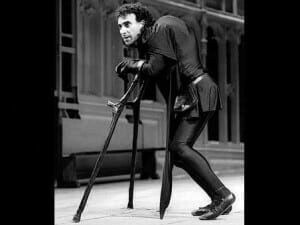
There are some interesting exceptions where authors and filmmakers play with the notion of gerontomorphy. Perhaps Beauty and the Beast, is one (although I still think it's more suggestive of The Stockholm Syndrome) in that Belle might be seeing through the physical form of the beast to the more Beautific soul of the young prince.
In Studio Gibli/Hayao Miyazaki's Howl's Moving Castle animated film the 'good' protagonist is a young girl with a spell cast on her which turns her into a very dear and determined old lady with gerontomorphic features, turning the tables on villain stereotyping.

Miyazaki also played with the notion of disfigurement in Porco Rosso, the Red PIg, an animated aviator who is kind-hearted but rough around the edges and looks like a pig. Perhaps his physical form is an allegory of his being a burn victim in an earlier plane crash.
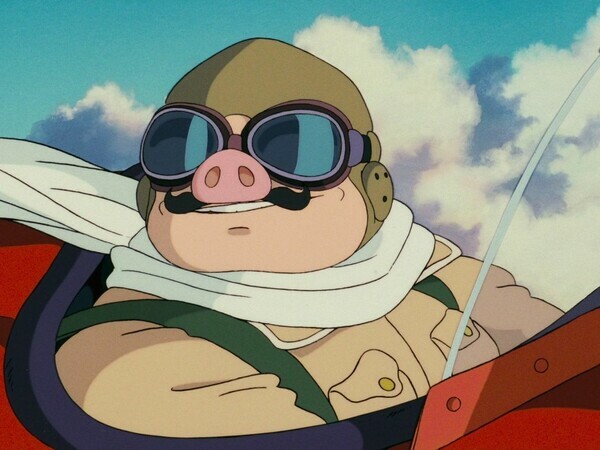
I should wrap this up just with the observations on the human head, but in class I'd often include some other examples of the power, and significance, of form as an element of art. Some of these I'll cover again in a post on biomorphic shapes, but consider what cellular and multicellular life forms consist of; enclosures, erections and sphincters.

I'd personally recognize these forms and the 'engineering' of life in much of the biomorphic abstract art of the 20th century. I'd also see them in architecture; perhaps the womb like enclosure of St. Peter's in Rome with the cervix like colonnade of Bernini out front that might draw in the devoted in like sperm cells. Or, better still, at ground zero in Toronto, the Doom Stadium, and enormous womb-like enclosure with a sphincter-like retractable roof cheek and jowl with what was at one time the worlds biggest free standing erection. Womb, cock and cunt.

Paul Arden, working for Saatchi and Saatchi created an astonishing series of adverts for the cigarette called Silk Cut which turned it into the best selling brand for women. There can be little doubt as to what the this image of a 'slit' in fabric below alludes to; a silk cunt. However, we apparently pay little conscious attention to advertising and so few of us notice how it affects us at a subconscious visceral level. This lack of attention is probably what makes it work so effectively in our consumer choices.
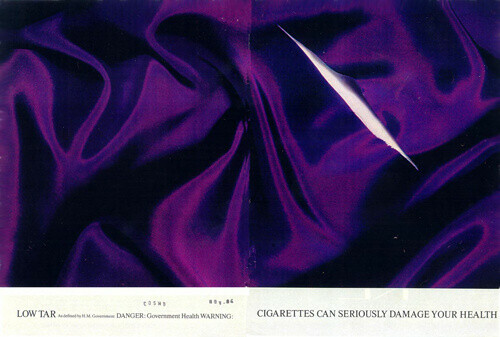
Below again is another clever poster for Lars Von Trier's film. These are powerful and suggestive visual forms whether we are actually aware of what they suggest or not.

To indicate how valuable forms are to a brand, I'd often show automobiles. Some would be high end and some low end. But it is often the shape of a car, a Jag, a Merc, a Cadillac, a Rolls, or the shape and design of some specific design component of them, like the grill, that defines the brand. Grills on family cars are often passive and pleasant but in sportier models, or trucks, often snarling and aggressive. This old VW ad, which I remember seeing regularly as a teen in magazines, makes a nice comparison to the film poster above. Arguably both are neither shapes or forms in that they are vectors, or lines, or curves, however they allude to a shape and therefore appear to describe form, as in a drawing.
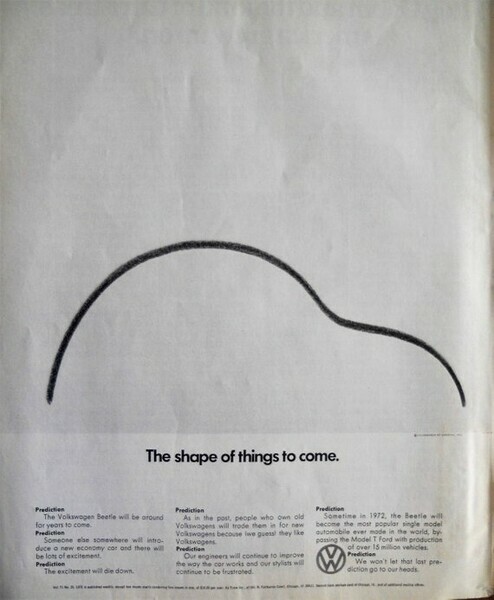
You should know the shape of the Citreon, if you're of a certain age. Often regarded as one of the finer auto designs. It is often used in the advertising of other products for the design prestige associated with the form. But look closely in the ad below; there is a motif that is a 2D form, a series of shapes which, if you're Canadian, should suggest something you are quite familiar with.
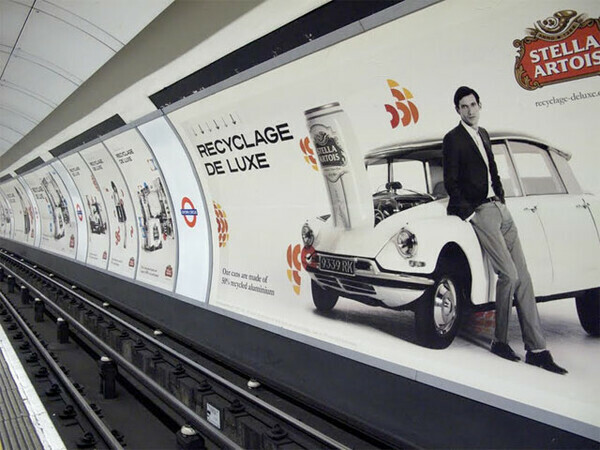

That would be the CBC logo. The forms in the Stella beer ad with the Citreon were too close for comfort, so CBC apparently sued and the ads were withdrawn. As well as the Voight-Kampff-like effects on the human psyche, or perhaps because of them, forms have high proprietary value and can be copyrighted. Think Coke bottles. To me, this is a further indication of how powerful form, as an element of art, is.